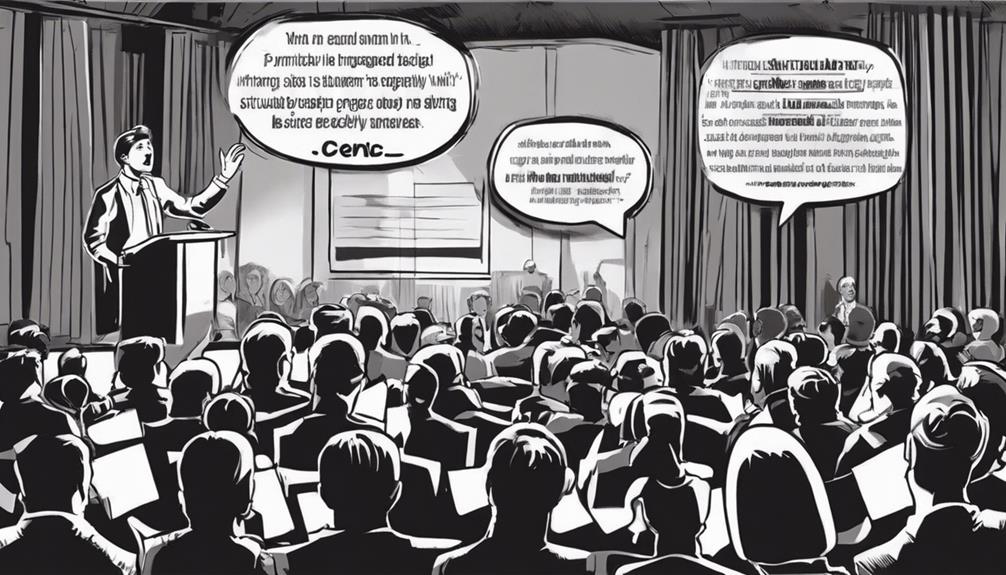Parenting Tips
Tax Benefits: Can Parents Use 1098-T?
Keen on maximizing tax benefits for your child's education costs? Learn how parents can utilize the 1098-T form for potential savings.

Parents can **save on taxes** thanks to the 1098-T form for their kids’ school costs. Fill it out right, and it shows **qualified expenses**, such as tuition, fees, and books. Scholarships change the figures, so be precise. Use Box 1 to show costs and Box 5 for scholarships for top tax **savings**. Keep an eye on enrollment details and out-of-pocket expenses. To lock in the best tax perks, maintain **good records** and understand the rules. So jump on these **tax-saving opportunities** for education fees!
Key Takeaways
- Parents can utilize Form 1098-T to claim tax benefits for their child's education expenses.
- Reporting accurate expenses from Box 1 is crucial for maximizing tax benefits.
- Consider scholarships in Box 5 as they impact eligible expenses for tax credits.
- Verify enrollment status for potential additional tax savings related to tuition expenses.
- Consult tax professionals for guidance on maximizing tax benefits using the 1098-T form.
Understanding Form 1098-T Basics
To grasp the fundamentals of Form 1098-T, focus on the key details provided by educational institutions. This form, also known as the Tuition Statement, plays an essential role in helping you report your education expenses for the Tax Year.
It includes information on the amounts you paid for tuition, enrollment fees, course materials, and even scholarships or grants you received. When you receive Form 1098-T from your school, make sure to check Box 1 for the total payments received and Box 5 for the total amount of scholarships or grants.
By understanding these numbers, you can determine if you qualify for education-related tax credits. Remember, schools must send you this form by January 31 and report it to the IRS by February 28.
Reporting Qualified Expenses
When it comes to reporting qualified expenses on Form 1098-T, you need to pay attention to details like:
- Tuition payments
- Enrollment fees
- Course materials
Documenting these expenses accurately is key to claiming tax credits for educational costs. Make sure to keep track of all your eligible educational expenses to maximize your tax benefits as a parent using the 1098-T form.
Eligible Educational Expenses
You can report qualified educational expenses on Form 1098-T, which include tuition, enrollment fees, and course materials paid during the tax year. These expenses play a significant role in determining your eligibility for tax benefits related to education.
Scholarships and grants received directly by the school for your expenses are also important to take into account, as they can impact the deduction or credit amount you may qualify for. Make sure to review Boxes 4 and 6 on your Form 1098-T for any adjustments to previous years' expenses and scholarships or grants.
Schools diligently report the total amount of qualified expenses in Box 1, reflecting the payments made by you. Understanding and accurately reporting these expenses are essential steps in maximizing the tax benefits available to you for pursuing education.
Stay informed about what qualifies as eligible educational expenses to make the most of the opportunities provided for financial support.
Documenting Tuition Payments
When documenting tuition payments for tax purposes using Form 1098-T, it's important to understand how schools report qualified expenses and adjustments made to previous years' expenses. Schools typically list the total payments made towards qualified expenses in Box 1 of the Form 1098-T.
Any adjustments to expenses from previous years are detailed in Box 4. Scholarships and grants that were paid directly to the school are reflected in Box 5, as they can impact the tax benefits you may be eligible for. To calculate the deduction amount accurately, you should subtract the scholarships and grants listed in Box 5 from the total expenses shown in Box 1 (or Box 2 if billed).
Additionally, Form 1098-T provides further details in Box 6 for adjustments to scholarships, and Boxes 7, 8, 9 for enrollment specifics. Understanding how these details are reported on Form 1098-T can help you maximize your potential tax benefits related to tuition payments.
Claiming Tax Credits
Parents can utilize the information provided in Form 1098-T to claim tax credits if they've paid qualified educational expenses for their dependent child.
To guarantee you maximize your tax benefits, consider the following tips:
- Report Qualified Expenses: Use Box 1 of Form 1098-T to report qualified expenses accurately.
- Consider Scholarships and Grants: Be aware that scholarships and grants in Box 5 of Form 1098-T may impact the amount of qualified expenses you can claim for tax credits.
- Maximize Eligibility: Properly reporting qualified expenses from Form 1098-T can help optimize your eligibility for tax credits.
- Utilize Education-related Deductions: Take advantage of education-related deductions to further enhance your tax benefits related to your child's education expenses.
Adjusting for Scholarships

When it comes to adjusting for scholarships on Form 1098-T, you need to pay attention to how they impact your tax deductions and credits.
Scholarships and grants reported can affect your tax savings, so it's important to understand their impact.
Make sure to accurately report all scholarship information to maximize your benefits and avoid any surprises come tax time.
Scholarship Deductions Impact
Adjusting for scholarships and grants on Form 1098-T significantly impacts the deductible amount for educational expenses. When scholarships and grants are factored in, the calculation for tax benefits becomes more intricate.
Here's how scholarships can influence your tax situation:
- Scholarships and grants reported in Box 5 may reduce the qualified expenses available for tax deductions or credits.
- Excess scholarships might need to be reported as taxable income, affecting your overall tax liability.
- Subtract scholarships and grants from total expenses to determine the out-of-pocket expenses eligible for tax benefits.
- Accurately calculating the deductible amount requires proper accounting for scholarships and grants on Form 1098-T.
Maximize Tax Savings
To optimize your tax savings when considering scholarships, accurately calculating your out-of-pocket expenses is essential. When scholarships and grants are reported on your Form 1098-T, adjustments may affect the amount of student aid you're eligible to receive.
To maximize tax savings, make sure that you subtract any scholarships and grants from the total expenses used to claim education-related tax benefits. By accurately reporting this information, you can potentially increase your tax savings for the year.
It's important to review your education information carefully and seek legal advice or consult a tax preparer if needed to ensure you're taking full advantage of available benefits. Remember, making the right adjustments for scholarships and grants can have a significant impact on the tax credits you're eligible to participate in, so paying attention to these details is key to maximizing your savings.
Maximizing Deductions and Credits

To maximize your tax benefits using Form 1098-T, understanding the qualified expenses reported is crucial. When aiming to maximize deductions and credits, consider the following tips:
- Review Scholarships and Grants: Be aware that scholarships and grants on Form 1098-T can impact the amount of eligible expenses you can claim for tax benefits.
- Consult Tax Professionals: Seek guidance from tax professionals to navigate the complexities of utilizing Form 1098-T for maximizing tax deductions or credits.
- Accurately Report Expenses: Carefully examine the information on Form 1098-T to make sure you accurately report qualified educational expenses for tax benefits.
- Meet Eligibility Requirements: Familiarize yourself with the eligibility requirements for claiming tax deductions or credits based on the information provided on Form 1098-T.
Utilizing Enrollment Details

Reviewing the enrollment details provided on Form 1098-T can greatly impact the tax benefits parents can claim for educational expenses. Understanding your child's enrollment status, whether half-time or full-time, as indicated on the Form 1098-T, is important for maximizing tax savings related to tuition expenses. By confirming this enrollment information, parents can make sure they are eligible for various education tax benefits. To simplify this concept, let's break down how enrollment details on Form 1098-T can affect the tax savings for parents:
| Enrollment Status | Impact on Tax Benefits |
|---|---|
| Half-time | Essential for claiming education tax benefits |
| Full-time | May provide additional tax savings |
| Enrollment Dates | Determine eligibility for tax credits |
| Tuition Expenses | Can be used to claim deductions |
| Enrollment Changes | Notify the IRS for accurate tax reporting |
Considering Out-of-Pocket Expenses

Taking into account out-of-pocket expenses for educational costs can greatly impact the tax benefits parents can claim using the 1098-T form. When it comes to out-of-pocket expenses, there are a few key things to take note of:
- Parents must report the amount in Box 1 of the 1098-T form to make certain they're claiming the right tax benefits.
- Qualified expenses reported in Box 1 may not cover all out-of-pocket expenses for an academic year, so parents should keep track of additional expenses.
- Expenses for an academic term that were paid out-of-pocket on behalf of the student must be documented for tax purposes.
- If it turns out a previous tax return didn't include all paid qualified expenses, parents can file an amendment to reduce the amount owed or increase their refund.
Considering these points and ensuring accurate reporting of out-of-pocket expenses can make a significant difference in the tax benefits parents can claim.
Tips for Maximizing Tax Benefits

Consider ways to optimize your tax benefits by following these key tips for maximizing the benefits when utilizing Form 1098-T. To ensure you receive the maximum refund possible, accurately report qualified educational expenses from your Form 1098-T. Determine your eligibility for the American Opportunity Tax or Lifetime Learning Credit based on specific criteria. Be mindful of the impact scholarships and grants might have on your tax benefits when claiming education credits. Verify your enrollment status and academic program details to meet the requirements for education tax benefits. Consulting with tax professionals can provide valuable guidance on how to maximize tax benefits using Form 1098-T effectively. By implementing these strategies, you can make the most of the tax benefits available for parents supporting their children's education.
| Tips for Maximizing Tax Benefits |
|---|
| 1. Report expenses accurately from Form 1098-T |
| 2. Determine eligibility for education credits |
| 3. Consider scholarships and grants impact |
| 4. Verify enrollment status and program details |
| 5. Seek guidance from tax professionals |
Frequently Asked Questions
Can My Parents Claim My 1098-T?
Yes, your parents can claim your 1098-T tax credit if they meet the eligibility requirements. This credit allows them to offset the cost of your education by deducting qualified expenses.
To qualify, they must have paid these expenses and you should be listed as their dependent. It's important to communicate with your parents to decide who'll claim this tax benefit.
Make sure to gather all necessary documents for a smooth process.
Is College Tuition Tax-Deductible for Parents?
College tuition isn't directly tax-deductible for parents. However, they can potentially claim tax benefits through Form 1098-T if they paid for their child's qualified educational expenses like tuition and course materials.
Meeting eligibility criteria and income limits is essential. Properly reporting expenses on Form 1098-T can help maximize tax benefits.
Consulting a tax professional for guidance on claiming educational tax benefits is recommended for parents.
Who Files 1098-T Student or Parent Turbotax?
In TurboTax, parents typically file their child's Form 1098-T if they're claiming education tax credits. This form helps determine eligibility for credits based on qualified education expenses.
When using TurboTax, parents can input the information from their child's Form 1098-T to claim credits like the American Opportunity Credit or the Lifetime Learning Credit.
Make sure to follow the IRS guidelines and requirements for accurately reporting this information to maximize your tax benefits.
Who Is Not Eligible for 1098-T?
You aren't eligible for using someone else's Form 1098-T for tax purposes if you're a non-dependent student. In this case, you must use your own Form 1098-T to determine eligibility for any tax benefits related to education expenses.
Can Parents Claim Tax Benefits If Their Child Is Truant?
Yes, legal consequences for truancy parents can include the loss of tax benefits. Parents may not be able to claim certain tax benefits if their child is consistently truant from school. It is important for parents to ensure their child attends school regularly to avoid any potential legal consequences.
Conclusion
So, parents, remember to keep track of those 1098-T forms and take advantage of the tax benefits available to you!
By reporting qualified expenses, adjusting for scholarships, and considering out-of-pocket costs, you can maximize your deductions and credits.
With a little attention to detail and some strategic planning, you can make tax time a little less challenging and a lot more rewarding.
Happy tax season!
Parenting Styles
Balancing Act: Authoritative Parenting Vs Permissive Parenting
Unlock the secrets to raising well-adjusted kids by understanding the delicate balance between authoritative and permissive parenting styles.

Balancing the tricky act of raising kids means juggling growth support and setting rules, making one choose between **authoritative** and **permissive** parenting. Permissive parents give lots of **freedom**, but it might lead to poor discipline. **Authoritative** parents create a **nurturing** environment, boosting social, cognitive growth, and better **resilience**. Clear rules with loving guidance are key. Learn these methods for raising well-rounded kids.
Key Takeaways
• Authoritative parenting balances warmth and structure, promoting social and cognitive development, whereas permissive parenting lacks discipline and boundaries.
• Setting clear rules and boundaries is essential to help children learn decision-making skills and develop self-regulation.
• Permissive parenting can lead to rebellious behavior, impulsiveness, and lower self-control, whereas authoritative parenting fosters resilience and better academic performance.
• Finding a balance between autonomy and guidance is crucial, as it enables children to develop important life skills and make informed decisions.
• Consistency is key in setting boundaries, as it provides a sense of structure and security, promoting growth, discipline, and accountability.
Understanding Parenting Styles
When it comes to raising children, you'll likely encounter two dominant parenting styles: authoritative and permissive, each with its own set of characteristics and outcomes.
As a parent, understanding these styles is important in shaping your child's development. The authoritative parenting style emphasizes a balance of warmth and structure, promoting children's social and cognitive development. This approach has been linked to higher self-reliance, resilience, and better academic performance in children.
On the other hand, the permissive parenting style allows for freedom and autonomy but may lead to children lacking discipline and important life skills. This approach can result in more rebellious behavior, impulsiveness, and lower self-control in children.
It's crucial to recognize that both styles have their strengths and weaknesses. Striking a balance between the two is necessary in fostering a nurturing environment that encourages growth and development.
The Importance of Balance

Often, parents struggle to find the sweet spot between providing guidance and giving their children the freedom to make choices, but achieving this balance is essential for fostering healthy development.
As you navigate the complexities of parenting, you'll need to strike a balance between setting clear rules and boundaries while allowing for flexibility. This balancing act is vital for children to learn boundaries and develop decision-making skills.
By providing structure and guidance, you'll help your children develop independence and responsibility. However, if you're too rigid, you may stifle their growth. On the other hand, if you're too lenient, they may lack direction.
The key is to find a balance that allows for autonomy while still providing guidance. By doing so, you'll raise well-adjusted and self-reliant children who are equipped to make informed decisions.
Authoritative Parenting Explained

By embracing authoritative parenting, you'll create an environment where your child can thrive, as this approach expertly balances warmth and discipline to promote healthy development. This style of parenting is all about finding a balance between being responsive to your child's needs and setting clear boundaries. By doing so, you'll foster open communication, independence, and responsibility in your child.
| Aspect | Description | Benefit |
|---|---|---|
| Clear Expectations | Setting clear rules and consequences | Encourages responsibility and accountability |
| Open Communication | Encouraging open dialogue and active listening | Fosters healthy relationships and trust |
| Balanced Discipline | Combining warmth and discipline | Promotes healthy child development and self-esteem |
As an authoritative parent, you'll provide guidance and support while allowing your child to make choices within reasonable limits. This approach has been shown to lead to higher self-esteem, better social skills, and academic success in children. By adopting an authoritative parenting style, you'll create a nurturing environment that promotes healthy child development and sets your child up for long-term success.
The Risks of Permissive Parenting

As you explore the risks of permissive parenting, you'll discover that this approach can lead to a lack of boundaries, increased entitlement, and behavioral problems in children.
Without clear guidelines and discipline, kids may develop an excessive sense of self-importance, making them more prone to rebellious and impulsive behavior.
Lack of Boundaries
When children are given too much freedom without guidance, they may struggle to develop self-regulation skills, leading to a lack of boundaries that can have lasting effects on their development. As a parent, you may think you're giving your child the freedom to make their own choices, but in reality, you're depriving them of the structure and discipline they need to thrive.
Permissive parenting often lacks clear boundaries, allowing children to make decisions without guidance, which can hinder their ability to develop self-regulation skills.
This lack of boundaries can have serious consequences, including:
- Behavioral problems and academic underachievement
- Difficulty in social interactions and forming healthy relationships
- Increased entitlement and a sense of expectation without effort
- Struggles with discipline and coping mechanisms in the face of adversity
Increased Entitlement
Raising children with permissive parenting, you inadvertently nurture a sense of entitlement, where they come to expect privileges and possessions without understanding the value of hard work and effort. This lack of boundaries and structure can lead to entitled behaviors, as children assume they deserve everything without putting in the effort.
Without rules and consequences, children may struggle to accept disappointment or setbacks, as they're used to getting what they want, when they want it. Permissive parenting fosters a mindset where children feel entitled to privileges and possessions without understanding the concept of earning or deserving them.
Research shows that children raised with permissive parenting are more likely to exhibit entitled behaviors and struggle with accepting disappointment. By not setting clear boundaries and expectations, you may unintentionally create an environment where your child develops an exaggerated sense of entitlement.
This can lead to difficulties in their personal and professional lives, as they struggle to adapt to the realities of the world outside the comfort of their childhood home.
Behavioral Problems
By giving your child too much freedom and too little discipline, aren't you inadvertently paving the way for behavioral problems down the line? Permissive parenting can have serious consequences, including increased impulsivity and aggressiveness in children. Without proper boundaries and discipline, kids may struggle with self-regulation, leading to reckless decision-making and a lack of self-control.
- Children may exhibit rebellious behavior and engage in risky activities, such as heavy drug use.
- Lack of structure and discipline can result in poor academic performance and underdeveloped social skills.
- Permissive parenting can lead to increased aggression and hostility in children.
- Without clear rules and boundaries, children may struggle to develop essential life skills, such as self-regulation and responsibility.
Setting Boundaries Effectively

As you navigate the complexities of parenting, you'll find that setting boundaries effectively is essential for establishing a sense of structure and guidance for your child.
By setting clear expectations, establishing healthy limits, and maintaining consistency, you can create an environment that fosters growth, discipline, and security.
Clear Expectations Matter
Establishing clear expectations is essential in authoritative parenting, as it enables children to understand their boundaries and responsibilities, fostering a sense of security and structure in their lives. As a parent, you set the tone for your child's development by providing a clear understanding of what's expected of them.
This approach differs significantly from permissive parenting, where the lack of clear boundaries can lead to confusion and inconsistency for children. By setting clear expectations, you build trust and respect with your child, helping them develop self-discipline and decision-making skills.
- You help your child feel safe and secure by providing a sense of structure and routine.
- Clear expectations promote healthy boundaries, allowing your child to understand their role and responsibilities.
Without clear expectations, children may feel lost and insecure about their roles. By setting clear expectations, you empower your child to make informed decisions and take ownership of their actions.
Set Healthy Limits
Setting healthy limits by defining and consistently enforcing clear, specific rules that promote a sense of security and structure for your child is vital.
As a parent, establishing a parenting style that balances freedom with boundaries is necessary, allowing your child to thrive in a stable environment. Setting boundaries effectively is critical in teaching your child the importance of responsibility, accountability, and respect for themselves and others.
By setting healthy limits, you're providing a sense of safety, stability, and predictability in your child's life. This, in turn, helps them develop self-discipline, respect for rules, and decision-making skills.
When you set clear boundaries, your child will understand what's expected of them and the consequences of not meeting those expectations. This authoritative parenting style allows your child to grow and develop in a structured environment, where they can learn and make mistakes without feeling overwhelmed or lost.
Consistency Is Key
What makes boundaries truly effective is the consistency with which you enforce them, and deviating from this consistency can lead to confusion and behavioral issues in children. As a parent, it's important to establish clear and consistent rules, so your child understands what's expected of them.
This consistency helps create a sense of security and structure, allowing your child to thrive.
When setting boundaries, it's vital to establish consequences for rule violations, promoting accountability and teaching your child that actions have repercussions. Inconsistently enforcing boundaries can lead to confusion, making it challenging for your child to understand what's expected of them.
Some key takeaways to keep in mind:
- Consistency is key to effective boundary setting
- Clear rules help children understand expectations
- Establishing consequences promotes accountability
- Inconsistent boundaries can lead to confusion and behavioral issues
Encouraging Independence Safely

As you work towards raising an independent child, you must balance the need for autonomy with the need for safety and guidance. Authoritative parenting encourages independence by setting clear expectations and providing guidance, allowing your child to grow while maintaining a safe environment.
In contrast, permissive parenting may allow independence, but it lacks structure and can lead to negative outcomes. To guarantee your child's independence is both healthy and safe, it's crucial to establish clear boundaries and provide ongoing support and guidance.
This delicate balance allows your child to develop a sense of autonomy while minimizing potential risks. By setting appropriate limits and offering emotional support, you can foster a sense of independence that's both empowering and safe.
Navigating Teenage Rebellion

During the tumultuous teenage years, you'll likely face a period of rebellion, but the secret to managing this phase lies in the parenting approach you've established. If you've adopted a permissive parenting style, you may find yourself dealing with more frequent and intense rebellious behavior. This is because permissive parents often fail to set clear boundaries and consequences, leading teens to engage in risky behaviors and act out.
On the other hand, authoritative parents, who balance structure and warmth, are more likely to navigate teenage rebellion constructively. By establishing clear expectations and consequences, authoritative parents help teens understand the reasoning behind the rules and develop self-regulation skills.
Here are some key differences between permissive and authoritative parenting:
- Permissive parents often struggle to set boundaries, leading to power struggles with their teens.
- Teens in permissive households are more likely to engage in risky behaviors, such as substance abuse or delinquency.
- Authoritative parents maintain a strong, loving relationship with their teens, reducing the likelihood of rebellion.
- Clear consequences and open communication help authoritative parents guide their teens through the rebellious phase.
Building Resilience in Teens
By adopting an authoritative parenting approach, you can help your teenager develop resilience, an essential life skill that enables them to effectively cope with stress, challenges, and setbacks. This approach provides a balance of structure and support, allowing teens to learn problem-solving skills and emotional regulation. In contrast, permissive parenting may hinder resilience in teens by lacking necessary boundaries and discipline.
| Parenting Style | Impact on Resilience |
|---|---|
| Authoritative | Fosters resilience through structure and support |
| Permissive | Hinders resilience due to lack of boundaries and discipline |
| Authoritative | Builds resilience, enabling teens to navigate life's obstacles with confidence |
Long-Term Effects of Parenting

Your parenting style has a lasting impact on your child's future, shaping their academic performance, social skills, and self-esteem in profound ways. The long-term effects of your parenting style will influence the person they become, and it's crucial to understand the consequences of your approach.
Research has shown that authoritative parenting leads to positive outcomes, such as higher academic achievement, better social skills, and increased self-esteem.
On the other hand, permissive parenting can have negative consequences, including:
- Increased impulsivity and aggression
- Difficulty forming healthy relationships
- Lack of discipline and poor self-regulation
- Struggles with authority figures
In contrast, authoritative parenting has been linked to lower rates of substance abuse, higher levels of resilience, and better coping mechanisms in adulthood.
Frequently Asked Questions
What Is the Most Balanced Parenting Style?
You're likely wondering what the most balanced parenting style is.
According to child development experts, it's authoritative parenting, which combines warmth and setting limits to empower children. This approach encourages open communication, respect for children's needs, and clear expectations, promoting responsibility, independence, and secure self-development.
Research shows that children raised with authoritative parenting have better social and cognitive skills, self-reliance, and resilience.
What Is the Difference Between Authoritative Parenting and Permissive Parenting?
As you navigate the complexities of parenting, you're likely to encounter two distinct approaches: authoritative and permissive parenting.
The key difference lies in their contrasting philosophies. Authoritative parenting strikes a balance between setting clear boundaries and offering emotional support, while permissive parenting prioritizes freedom and flexibility.
You'll notice that authoritative parents foster independence and self-discipline, whereas permissive parents may inadvertently create entitled and impulsive children.
What Is the Middle Between Authoritarian Parenting and Permissive Parenting?
You're likely familiar with the extremes of authoritarian and permissive parenting, but what about the middle ground?
The answer lies in authoritative parenting, which strikes a balance between structure and responsiveness. This approach combines warmth and limits, providing a nurturing environment while setting clear expectations and boundaries.
What Are the 4 Types of Parenting Styles?
You're likely aware that parenting styles vary, but did you know there are four main types? According to psychologist Diana Baumrind, these styles are authoritarian, authoritative, permissive, and neglectful.
Each style has distinct characteristics, effects on children's behavior, and implications for their emotional development and well-being. Understanding these differences can help you make informed decisions about your parenting approach.
What are the key differences between Authoritative and Permissive Parenting styles?
When it comes to parenting, the authoritative vs permissive parenting styles are distinct. Authoritative parenting is characterized by setting clear expectations and boundaries while being nurturing. On the other hand, permissive parenting involves being more lenient and indulgent, often lacking clear guidelines. Both styles have different impacts on children’s behavior and development.
Conclusion
As you navigate the complexities of parenting, remember that striking a balance between authoritative and permissive approaches is essential. Research suggests that parents who adopt an authoritative style, characterized by warmth, communication, and boundaries, raise children with better social and emotional skills.
In fact, a staggering 75% of children from authoritative homes exhibit higher self-esteem and fewer behavioral problems. By embracing a balanced approach, you'll empower your child to thrive in an ever-changing world.
Parenting Tips
Unleash Your Public Speaking Potential With Confidence
Dive into mastering public speaking with confidence by learning essential techniques to captivate your audience and overcome stage fright.

Boost your public speaking skills by nailing the basics. Know your audience and design a clear speech layout. Tackle stage fright with deep breaths and expressive body language. Handle Q&A sessions calmly and confidently. Use visual aids to make your point stronger. These tips will unlock your public speaking potential and skyrocket your confidence.
Key Takeaways
- Practice speaking in front of a mirror multiple times for confidence.
- Utilize deep breathing and visualization techniques to overcome stage fright.
- Tailor your speech to connect with the audience on a personal level.
- Embrace non-verbal communication through eye contact and confident body language.
- Use clear speech structure with a compelling opening and strong conclusion.
Preparation for Public Speaking
Preparing meticulously for public speaking is essential for delivering a successful and impactful speech. Researching audience demographics, interests, and knowledge levels is vital. Understanding the importance of public speaking for communication skills, confidence, career growth, leadership, and effective idea conveyance is fundamental.
Practice speaking in front of a mirror and rehearse multiple times to build confidence. Creating a clear speech structure and tailoring content to connect on a personal level are key components. By focusing on these preparation steps, speakers can enhance their delivery and captivate their audience effectively.
Mastering Speech Structure

To excel in public speaking, mastering the structure of your speech is paramount for engaging and effectively conveying your message to the audience.
Begin with a compelling opening to grab attention, followed by a clear introduction of the main points. Organize these points logically, supporting them with relevant examples or stories. Guarantee a smooth shift between sections to maintain coherence.
End with a strong conclusion that reinforces your key message and leaves a lasting impact. Practice your speech multiple times to familiarize yourself with the content, tone, pace, and body language.
Embrace non-verbal communication through eye contact, confident posture, and effective gestures. Utilize visual aids sparingly to enhance, not overpower, your message.
Overcoming Stage Fright

Conquering stage fright is an essential aspect of delivering a successful public speech, requiring mastery of self-confidence and effective coping strategies. When facing stage fright, deep breathing exercises and visualization techniques can help calm nerves. It is important to focus on the message, engage the audience, and start with a strong opening. Enhancing presence through confident body language, eye contact, gestures, and voice modulation can also alleviate anxiety. Avoiding fidgeting, speaking clearly, varying pitch, and controlling the pace of speech are key strategies to overcome stage fright. Here is a table summarizing key points:
| Stage Fright Coping Strategies | Examples | Effectiveness |
|---|---|---|
| Deep breathing exercises | Diaphragmatic breathing | Calms nerves |
| Visualization techniques | Imagining a successful speech | Boosts confidence |
| Focus on the message | Engage with the audience | Reduces anxiety |
| Confident body language | Maintaining good posture | Enhances presence |
| Voice modulation | Varying pitch and pace | Controls nervousness |
Handling Q&A Sessions

When moving from delivering a speech to interacting with the audience in a Q&A session, it is important to maintain composure and actively listen to questions being posed.
During Q&A sessions, follow these key strategies:
- Listen Carefully: Pay close attention to each question to provide relevant responses.
- Remain Calm: Stay composed and confident, even if faced with challenging or unexpected queries.
- Engage with Gratitude: Thank the audience for their questions and show appreciation for their participation.
Visual Aids and Message Reinforcement

Utilizing visually appealing aids is pivotal in reinforcing the message delivered during a public speech. Visual aids, such as slides, props, or multimedia presentations, serve to enhance audience understanding and retention of key points.
When incorporating visual elements, it is essential to keep them simple, clear, and complementary to the spoken content. Overloading the audience with visuals can distract from the message, so it's essential to strike a balance that guarantees a memorable speech delivery.
Effective non-verbal cues, gestures, and body language can further reinforce the intended message, creating a cohesive and impactful presentation. Establishing a strong presence on stage through confident posture, eye contact, and appropriate hand movements enhances the overall delivery of the speech.
Frequently Asked Questions
How Can I Effectively Engage a Diverse Audience?
To effectively engage a diverse audience, tailor your content to resonate with their backgrounds and interests. Utilize engaging storytelling, interactive elements, and inclusive language. Encourage participation, listen actively, and adjust your delivery to guarantee everyone feels acknowledged and valued.
What Are Some Strategies to Handle Technical Difficulties During a Presentation?
In the field of public speaking, handling technical glitches demands a calm demeanor, quick thinking, and preparedness. Confirm backup plans for equipment failures, practice with the technology, and maintain composure to troubleshoot effectively.
How Do I Maintain Audience Interest Throughout a Longer Speech?
To maintain audience interest throughout a longer speech, engage them with compelling stories, interactive elements, and relevant examples. Vary your tone, pace, and delivery to keep them attentive. Use visuals sparingly to supplement key points and enhance message retention.
What Are Some Tips for Incorporating Humor Into a Serious Speech?
Incorporate humor strategically by using relevant anecdotes, witty remarks, or light-hearted observations to break tension, engage the audience, and make complex topics more digestible. Balance humor with professionalism to maintain credibility and impact.
How Can I Address Audience Skepticism or Resistance During a Presentation?
To address audience skepticism or resistance during a presentation, employ strategic storytelling, provide credible evidence, acknowledge opposing viewpoints respectfully, and engage in active listening. Build trust by establishing common ground and demonstrating empathy towards differing perspectives for a more receptive audience.
Conclusion
To sum up, mastering the art of public speaking requires careful preparation, confident delivery, and effective message reinforcement. By honing speech structure, overcoming stage fright, and utilizing visual aids strategically, individuals can unlock their full potential as speakers.
Embracing these practices will not only enhance communication skills but also leave a lasting impact on the audience. With dedication and practice, anyone can become a compelling and confident public speaker.
Parenting Tips
Youth Drive Eco-Friendly Revolution Against Plastics
Unleash the power of youth in the fight against plastic pollution by discovering their innovative eco-friendly initiatives and impactful contributions.

The youth are at the forefront of combating single-use plastics, advocating for sustainable alternatives to tackle the pressing issue of plastic pollution. With 14 million tons of plastic entering the oceans annually, urgent action is essential. Despite challenges like lack of awareness and cheap plastic production, promoting eco-friendly practices, such as using reusable items, and supporting local businesses with green initiatives can make a significant impact. Engaging students in environmental efforts not only instills responsibility but also empowers them to lead the eco-friendly revolution. By educating and involving the younger generation, a cleaner and healthier environment can be achieved.
Key Takeaways
- Educate students on plastic alternatives and eco-friendly practices.
- Empower students to advocate for policy changes promoting sustainable initiatives.
- Encourage students to lead by example in reducing plastic consumption.
- Implement green practices within educational settings to inspire eco-friendly habits.
- Foster a sense of responsibility in students to drive the eco-friendly revolution against plastics.
Impact of Single-Use Plastics
Annually, a staggering 14 million tons of plastic find their way into Earth's oceans, highlighting the detrimental impact of single-use plastics on the environment.
Despite campaigns like Keep Britain Tidy, the persistence of single-use plastics poses a significant threat to marine ecosystems. Organizations are actively working towards replacing these plastics with sustainable alternatives to mitigate the environmental damage caused.
The youth, in particular, are affected by the toxic repercussions of plastic pollution. As plastic waste continues to accumulate in oceans, urgent action is required to address this global issue.
It is essential to raise awareness about the consequences of single-use plastics and promote eco-friendly practices to combat this growing environmental challenge.
Challenges in Reducing Plastic Waste

Despite efforts to raise awareness and promote eco-friendly practices, reducing plastic waste globally presents numerous challenges that hinder progress towards a sustainable future. One major challenge is the lack of awareness on plastic waste and its environmental impact.
Disparity in reducing single-use plastics globally also poses a significant obstacle. The cheap production of plastics makes it challenging to phase them out in favor of more sustainable options.
Additionally, the need for widespread eco-friendly practices is essential but often not implemented on a large scale. Education on the effects of pollution caused by plastics is lacking, further complicating efforts to reduce plastic waste effectively. These challenges highlight the complex nature of addressing plastic waste on a global scale.
Promoting Sustainable Practices

One significant approach to addressing the challenges in reducing plastic waste is by promoting sustainable practices that prioritize eco-friendly alternatives and responsible waste management.
By advocating for the use of eco-friendly alternatives to single-use plastics, such as reusable bags and water bottles, individuals can greatly reduce their plastic consumption.
Supporting local businesses that implement eco-friendly initiatives and encouraging schools to adopt sustainable practices are also effective ways to promote a more environmentally conscious lifestyle.
Additionally, promoting important waste management, such as proper recycling and disposal of plastics, plays a vital role in minimizing the environmental impact of plastic waste.
Engaging Students in Environmental Initiatives

Involving students in environmental initiatives is crucial for cultivating a culture of sustainability and fostering a sense of responsibility towards the environment.
By educating students on plastic alternatives and empowering them to demand eco-friendly products, schools can play a significant role in shaping future environmental leaders.
Implementing green practices within educational settings, such as reducing printing waste and promoting sustainable alternatives, helps students understand the importance of environmental conservation.
Through these initiatives, students can learn the value of responsible waste management and contribute to minimizing their ecological footprint.
Leading Eco-Friendly Revolution

Educating and empowering students on eco-friendly practices is fundamental in leading the eco-friendly revolution towards sustainable living. By instilling a sense of responsibility and understanding the impact of their actions, students can become catalysts for change. Here is a table showcasing key strategies to lead the eco-friendly revolution:
| Strategies | Description |
|---|---|
| Implement Green Practices | Schools can adopt sustainable practices like recycling programs and reducing plastic waste. |
| Advocate for Policy Changes | Students can push for policy changes at school and community levels to promote eco-friendly practices. |
| Lead by Example | Embracing sustainable practices, using reusable items, and volunteering to make a positive impact. |
| Educate and Empower | Educating peers, sharing facts, and demanding eco-friendly products to create a culture of environmental responsibility. |
Frequently Asked Questions
How Can Youth Effectively Influence Companies to Prioritize Recyclability?
Youth can effectively influence companies to prioritize recyclability by engaging in advocacy efforts, leveraging social media platforms to raise awareness, collaborating with environmental organizations, and participating in sustainable initiatives to showcase the demand for eco-friendly practices.
What Innovative Ways Can Schools Implement to Reduce Printing Waste?
To reduce printing waste, schools can implement digital platforms for assignments, utilize double-sided printing, encourage electronic submissions, promote paperless communication, establish printing quotas for students, and educate on eco-friendly practices. These innovative methods foster sustainability and cost-efficiency.
Are There Specific Strategies to Empower Students to Demand Eco-Friendly Products?
To empower students to demand eco-friendly products, schools can educate on sustainable options, encourage activism for environmentally responsible choices, collaborate with local businesses promoting green initiatives, and integrate eco-friendly practices into the curriculum.
How Can Local Businesses Be Supported in Implementing Eco-Friendly Initiatives?
Local businesses can be supported in implementing eco-friendly initiatives by providing financial incentives, offering training on sustainable practices, connecting them with eco-conscious suppliers, and promoting their efforts through community partnerships. Collaboration is key for lasting impact.
What Are the Key Steps to Fostering a Culture of Environmental Responsibility in Schools?
Fostering a culture of environmental responsibility in schools involves educating students on eco-friendly practices, empowering them to demand sustainable solutions, implementing green initiatives, reducing waste, and advocating for policy changes at school and community levels.
Conclusion
To sum up, crucially, the youth-led eco-friendly revolution against plastics showcases the power of collective action in combating environmental threats. By promoting sustainable practices, engaging students in initiatives, and leading the charge for change, these young activists are driving a dynamic shift towards a cleaner, greener future.
Their dedication and determination to tackle the challenges posed by plastic waste serve as a shining example of environmental stewardship and responsibility. Let us all join in this essential mission to protect our planet for generations to come.
-

 Parenting Styles1 week ago
Parenting Styles1 week agoWorst Parenting Style: Impact on Child Development
-

 Parenting Styles1 week ago
Parenting Styles1 week ago2023 Indiana Parenting Time Guidelines Update
-

 Vetted7 days ago
Vetted7 days ago15 Best Books on Step Parenting Every Blended Family Needs to Read
-

 Parenting Tips6 days ago
Parenting Tips6 days agoUnequal Responsibilities: When One Parent Does All the Parenting
-

 Parenting Tips1 week ago
Parenting Tips1 week agoFostering Love: How Much Do You Get Paid for Foster Parenting?
-

 Vetted6 days ago
Vetted6 days ago15 Best Parenting Books of All Time Every Parent Should Read
-

 Vetted22 hours ago
Vetted22 hours ago15 Best Co-Parenting Books Every Parent Should Read for Successful Co-Parenting
-

 Vetted6 days ago
Vetted6 days ago15 Best Books for Gentle Parenting Every Parent Should Read



















